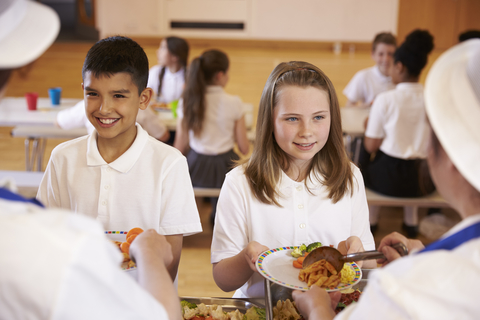For many students, Australian School Canteens are a fixture, providing a lunchtime treat or mid-morning snack they look forward to once a week or perhaps a few times during the term. They provide a respite for busy parents and students, giving them a break from the chore of preparing a home-made lunch for every day of the term.
However, the canteen of the 21st century faces many challenges. The first of these is the growing debate with regard to food options and, as in most areas of life, I think the question is best addressed by maintaining a balanced viewpoint. The ideal school canteen is one that caters to the broadest possible clientele – taking into account if their patrons identify as vegetarian, vegan, kosher, halal, coeliac, lactose intolerant, have a nut allergy, or have no such dietary requirements. Although it may seem trivial, tolerance when it comes to meal accommodation sends an important message to patrons of the school canteen. In an establishment where the values of tolerance and an awareness of difference should be encouraged, even a simple canteen and the options on its menu can show how such values operate in the real world, beyond the rhetoric of the classroom. In some cases, ignorance of these differences can result in health risks.
In addition, there is the war on junk food which is waged in many a canteen nowadays. Once again, I look to moderation to provide a solution. The old adage “A healthy body goes hand-in-hand with a healthy mind” is certainly true, and I believe the school can play a role in providing healthy food options for the benefit of its clients. However, the predominating and well-meant desire to promote health and well-being should not stifle the freedom of those who want to indulge in less than healthy treats from time to time. Provide carrot sticks, olives, and the like by all means, but I think it would be a mistake to phase out hot chips and ice cream entirely.
“But a little indulgence can lead to a lot of trouble” some would counter. This is easily avoided however, if parents monitor their children’s eating habits, only allowing them to have unhealthy snacks from the school canteen once every so often, and if children are educated about the consequences of overindulgence.
With all these food options and responsibilities to consider, canteens must be better organised and more efficient than they have been in the past. Online menus with photographs of the meals prepared, and detailed descriptions of their ingredients help both students and parents make the right nutritional choices. Each student or staff member who accesses the canteen could be provided with a School Canteen Account on the school website that keeps track of their previous meal choices and any dietary requirements they may have. Ordering online by ticking a box and paying for meals online can eliminate all the fuss of money handling, making it safer and less complicated for staff and students alike. In fact, online ordering is a system that has already been adopted by some schools. Here again, diversity is the key.
To get around technological problems or to please customers who dislike ordering online, the canteen should also have personable staff, people who know how to operate the system and how to interact with parents and teachers. The staff be paid, but there should always be opportunities for parent volunteers to help run the school canteen if they wish. For so long, parents have enjoyed helping school communities in this way. It would be a shame to see this tradition be replaced due to privatisation and outside sourcing of staff if parents are willing to support a school in this way.
Diversity, tolerance, and community spirit are the order of the day in any good school canteen.


